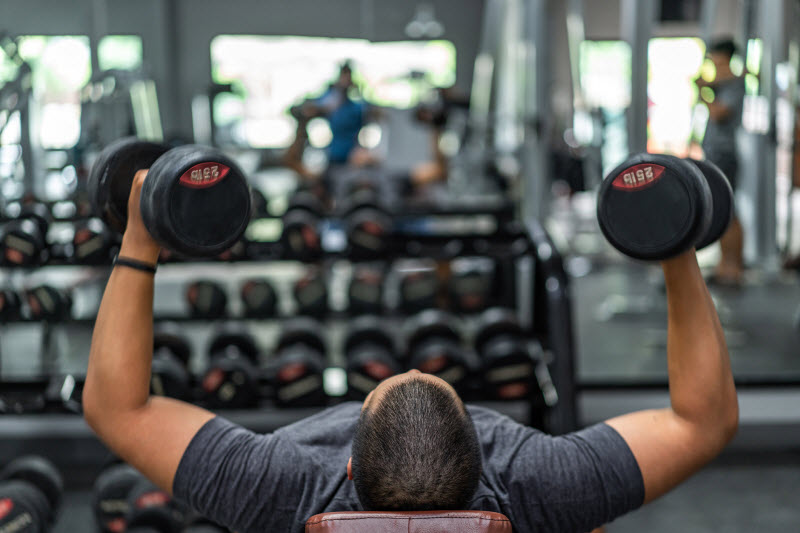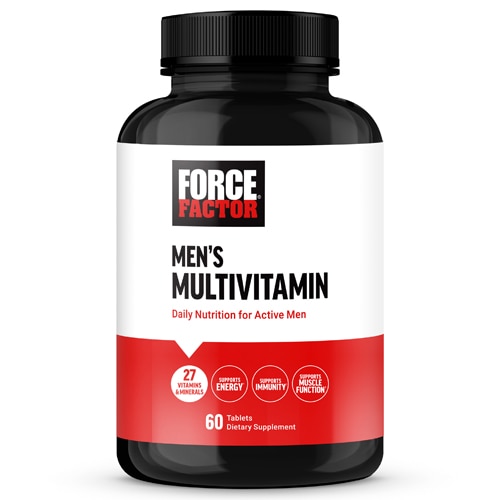[vc_row][vc_column][vc_column_text]There’s certainly no issue with striving to look and feel your best, whether that’s through
optimizing your skincare routine or dedicating time and energy to remaining fit.
And yet, when it comes to the latter, a darker, more insidious side exists—a psychological condition that’s been dubbed “bigorexia.” First coined in the 1990s to suggest the opposite of anorexia, and recently introduced to the Diagnostic and Statistic Manual of Mental Illnesses (DSMV-5), it’s progressively impacting primarily men, so much so that
as many as 44 percent of male body builders suffer from it while older statistics demonstrates that it may affect
one in 10 men who work out in UK gyms.
Here, we’ll explore this growing affliction, from whom it impacts and why it happens to the smartest ways to treat it.

What is bigorexia?
Also referred to as “reverse anorexia” and “muscle dysmorphia,” bigorexia is a preoccupation, if not obsession, with developing and maintaining a muscular build—or as the DSMV-5 phrases it, it’s a body dysmorphic disorder (BDD) prompted by the belief that one is not muscular enough and/or too small, even when their appearance speaks to the contrary.
Given that it’s relatively new, other scientists categorize it as a
psychological condition that sits at the crossroads of a feeding/eating disorder (FED) and a subtype of BDD.
Regardless of how it’s clinically characterized, we know that it’s a critical, hazard malady—and one that, in the face of social media and a rising obsession with often unattainable appearances, poses tremendous risks, especially for teens. As
Men’s Health, asserts “Bigorexia has young men doing dangerous things for muscle.”
What are the symptoms of bigorexia?
Muscle dysmorphia may manifest in a handful of ways, chiefly through:
- Spending an inordinate amount of time exercising, particularly with a focus on building muscle (such as lifting weights)
- Working out addictively, even when in substantial pain
- Pushing your body beyond its limit and risking injuries for the sake of achieving a “perfect” shape
- Worrying excessively about perceived physical defects
- Fixating on your appearance through compulsive actions and rituals like “mirror checking” and skin picking
- Limiting calories or whole food groups
- Consuming an abundance of protein
- Binge eating, fasting and purging to boost muscular definition
- Adhering to rigid eating schedules
- Steering clear of eating out due to concerns with food content (such as not knowing how many calories are in a certain dish)
- Obsessing over losing body fat and boosting muscle mass
- Focusing intently on body shape, size, strength, and eating
- Abusing supplements, namely anabolic steroids, human growth hormone, and creatine
- Comparing yourself (specifically, your muscle size) to others
- Avoiding places, peoples, or events because of physical concerns
- Camouflaging your body to appear bigger, or tailoring your attire to highlight certain areas
- Experiencing intrusive, negative thoughts that give rise to trouble concentrating, distractibility, anger, and moodiness
As the National Alliance for Eating Disorders puts it, bigorexia overlaps with other
eating disorders like anorexia nervosa and bulimia nervosa. What’s more, it may co-occur with a host of other serious mental health conditions, including obsessive compulsive disorder (OCD), post-traumatic stress disorder (PTSD), bipolar disorder, ADHD, substance abuse,
anxiety and depression.
What are the physical signs of bigorexia?
When the very words “eating disorders” or “body dysmorphia” come to mind, you might imagine someone either achingly thin or overweight. Bigorexia tends to look vastly different. In addition to large muscles (in some cases) or appearing lean and hyper-fit, it can make itself known through:
- Acute muscular definition
- Bloating and edema—or fluid retention—in the limbs and face
- Sudden changes in body weight or size
Furthermore, bigorexia may result in a diminished immune response. This may come to light in frequent illnesses and infections.
What are the ramifications of bigorexia?
Like other eating and body dysmorphic disorders, bigorexia is a grave issue that may lead to a number of complications.
It has the power to take over your entire existence and negatively affect every major domain of your life: Work, school, family, relationships, finances, even your hopes for the future.
In other words? It impairs day-to-day functioning. In fact, people with bigorexia claim that they’ve skipped work or gave up their long-terms plans to concentrate on one matter: Fitness. They may also deny, isolate or grow angry with loved ones who have expressed concerns with their behavior.
Bigorexia can also lead to a bevy of compounded psychological health issues, from increased shame and doubt to unrelenting insecurities. It may also result in depression, anxiety and substance abuse.
As for the physical side? Bigorexia may lead to hormonal imbalances, nutritional deficiencies, muscle and joint pain, ruptured discs, stress fractures and fatigue. And since those with bigorexia tend to abuse compounds like steroids, they may also be at an increased risk for several dire health complications, including:
It should be noted here that ceasing to take steroids may precipitate depression, thus boosting the desire to use again and escalating one’s vulnerability to relapse.
Further, roughly
80 percent of those with body dysmorphia disorder have said they’ve had suicidal ideations, while one in four or more have attempted to take their lives. Is it any wonder why the condition is currently taking over the headlines?
What are the causes of bigorexia?
As mentioned, bigorexia is a relatively fresh phenomenon and research on the disorder is still in its infancy. And yet, what data has been performed reveals that genetics may play a key role—meaning, if one of your family members grapples with the same anxieties, you might stand a stronger chance of developing the mental health condition.
Other factors that may contribute to the onset of bigorexia include:
- A history of being bullied or teased while growing up
- Social isolation and loneliness
- Low self-esteem
- Anxiety
- Abuse
- Violent victimization
Another notable ingredient that might prompt bigorexia—at least according to some theories—is a notion known as “The Adonis Complex.” Adonis, as you might recall, was a half-man, half-god from Greek mythology who represents the embodiment of masculine beauty. This can be exacerbated by the ubiquity of social media, peer pressure, and competitive environments (such as “hardcore” gyms and sports like wrestling and football).
Who is at risk for bigorexia?
Akin to many other mental health conditions, bigorexia is blind to one’s education, socioeconomic status, age or race. Or, to phrase it differently, it can impact
anyone.
However, while muscle dysmorphia can afflict women, it predominately affects teens and young men (those between the ages of 15 and 32). It’s also been found to hit especially hard with the following populations:
- Body builders/weightlifters
- Competitive athletes
- Military personnel
How is bigorexia treated?
Unfortunately, unlike anorexia and bulimia, muscle dysmorphia has faced some cultural resistance, so to speak, in part because people grapple with being sympathetic towards men who pursue muscularity. (The hope is that this will change, and swiftly at that.) At the same time, muscularity has become standardized in the body building community. Nonetheless, recovery
is possible—and essential.
Whether you suspect your loved one is in the claws of bigorexia—or you fear that you may by wrestling with it yourself—it’s imperative to seek professional help immediately. Your primary care physician can refer you to a mental health expert (if you or your loved one don’t have one already), who may assist with:
Cognitive behavioral therapy
Frequently referred to as (CBT), cognitive behavioral therapy can be enormously valuable in helping people
shift negative thought patterns and adopt healthy coping mechanisms. To date, it’s deemed one of the most effective interventions in treating bigorexia.
Exposure therapy
Exposure therapy is much like it sounds: It’s a form of psychotherapy in which one is exposed to the things that evoke anxiety and fear in them. More specifically, even though more clinical trials ought to be conducted,
mirror exposure therapy has been shown to potentially improve body dissatisfaction in those with body image disturbance and eating disorders.
Dialectical behavioral therapy: Created in the 1970s by American psychologist Marsha Linehan, dialectical behavioral therapy (DBT) zeroes in on encouraging people to accept the reality of their lives and behaviors, build practical skills, and curb intense, defeatist emotions.
Additionally, while there is no one pharmacological remedy for individuals with bigorexia, the Mayo Clinic (among other experts) indicate that
certain medications—such as selective serotonin reuptake inhibitors (SSRIs)—may be a solid choice for those with body dysmorphia disorder and even better than other antidepressants. Why? Because they can possibly help reign in untoward thoughts and repetitive behaviors and temper social avoidance. You might also want to consult with a dietitian, who can guide you towards foods that promote well-being, a stable mood, and longevity.
Further, consider natural remedies. This includes reducing your exposure to social platforms and other forms of media that can be triggering, joining a support group, shooting to eat a diet that includes not just protein but a wide array of nutrient-dense foods, finding balance in your workout routines and supplementing not with steroids but with
vitamins and minerals proven to enhance wellness.
Lastly, embrace positive self-talk—for the words you speak have a direct and tremendous effect on how you think, feel and, above all, treat yourself.[/vc_column_text][/vc_column][/vc_row][vc_row][vc_column][vc_text_separator title="Featured Products" border_width="2"][vc_row_inner equal_height="yes" content_placement="middle" gap="35"][vc_column_inner width="1/3"][vc_single_image image="186088" img_size="full" alignment="center" onclick="custom_link" img_link_target="_blank" css=".vc_custom_1751634736386{padding-right: 7% !important;padding-left: 7% !important;}" link="https://www.vitacost.com/universal-u-mens-total-health-pack"][/vc_column_inner][vc_column_inner width="1/3"][vc_single_image image="186087" img_size="full" alignment="center" onclick="custom_link" img_link_target="_blank" css=".vc_custom_1751634771297{padding-right: 7% !important;padding-left: 7% !important;}" link="https://www.vitacost.com/garden-of-life-raw-one-multivitamin-for-men-30-vegetarian-capsules-3"][/vc_column_inner][vc_column_inner width="1/3"][vc_single_image image="186086" img_size="full" alignment="center" onclick="custom_link" img_link_target="_blank" css=".vc_custom_1751634787153{padding-right: 7% !important;padding-left: 7% !important;}" link="https://www.vitacost.com/garden-of-life-vitamin-code-mens-multi-gummies"][/vc_column_inner][/vc_row_inner][/vc_column][/vc_row]





